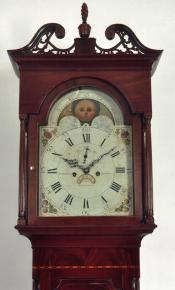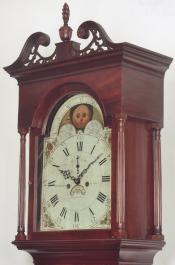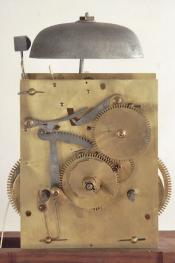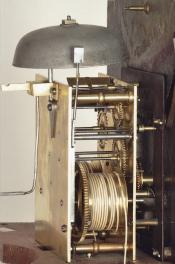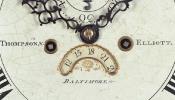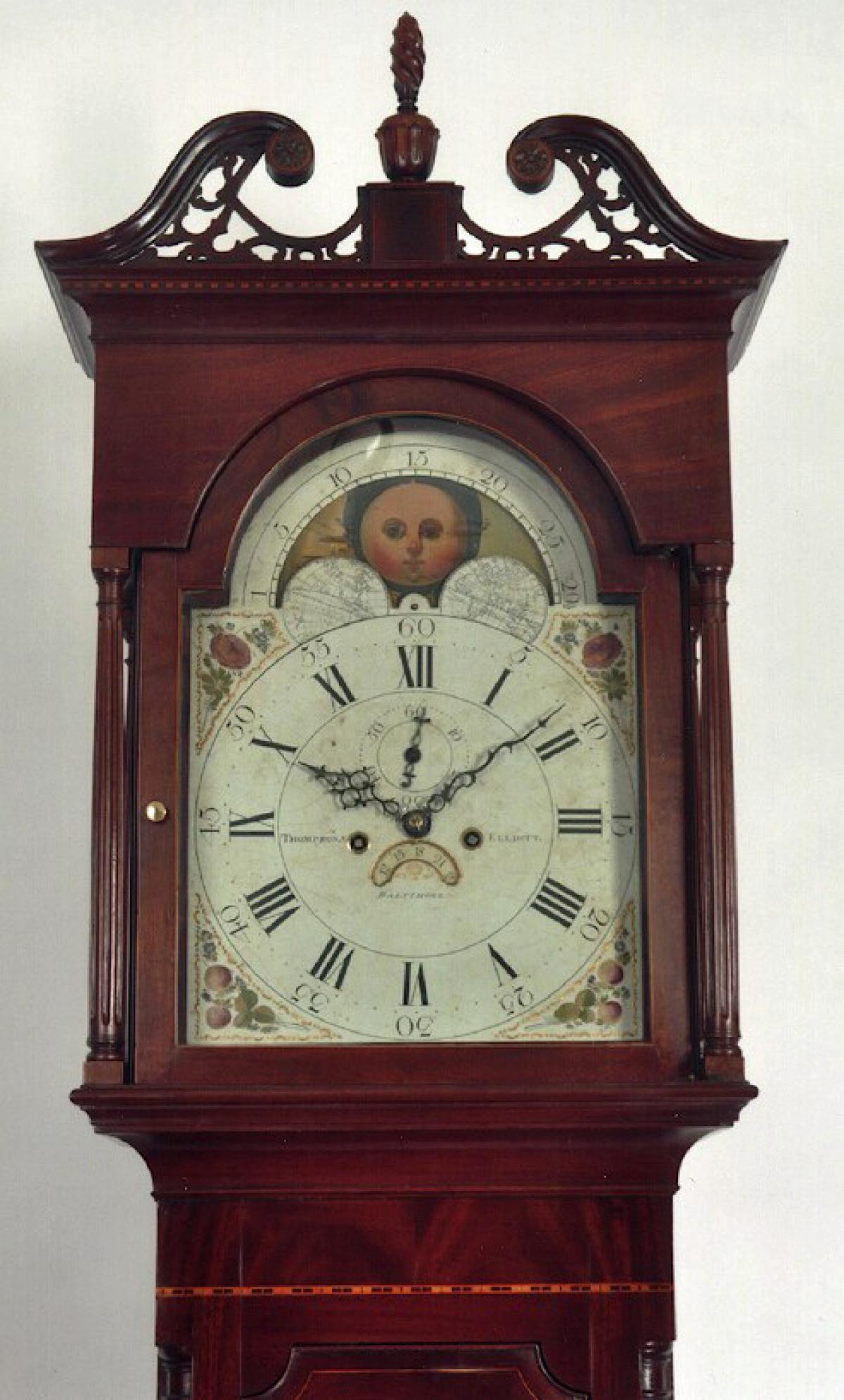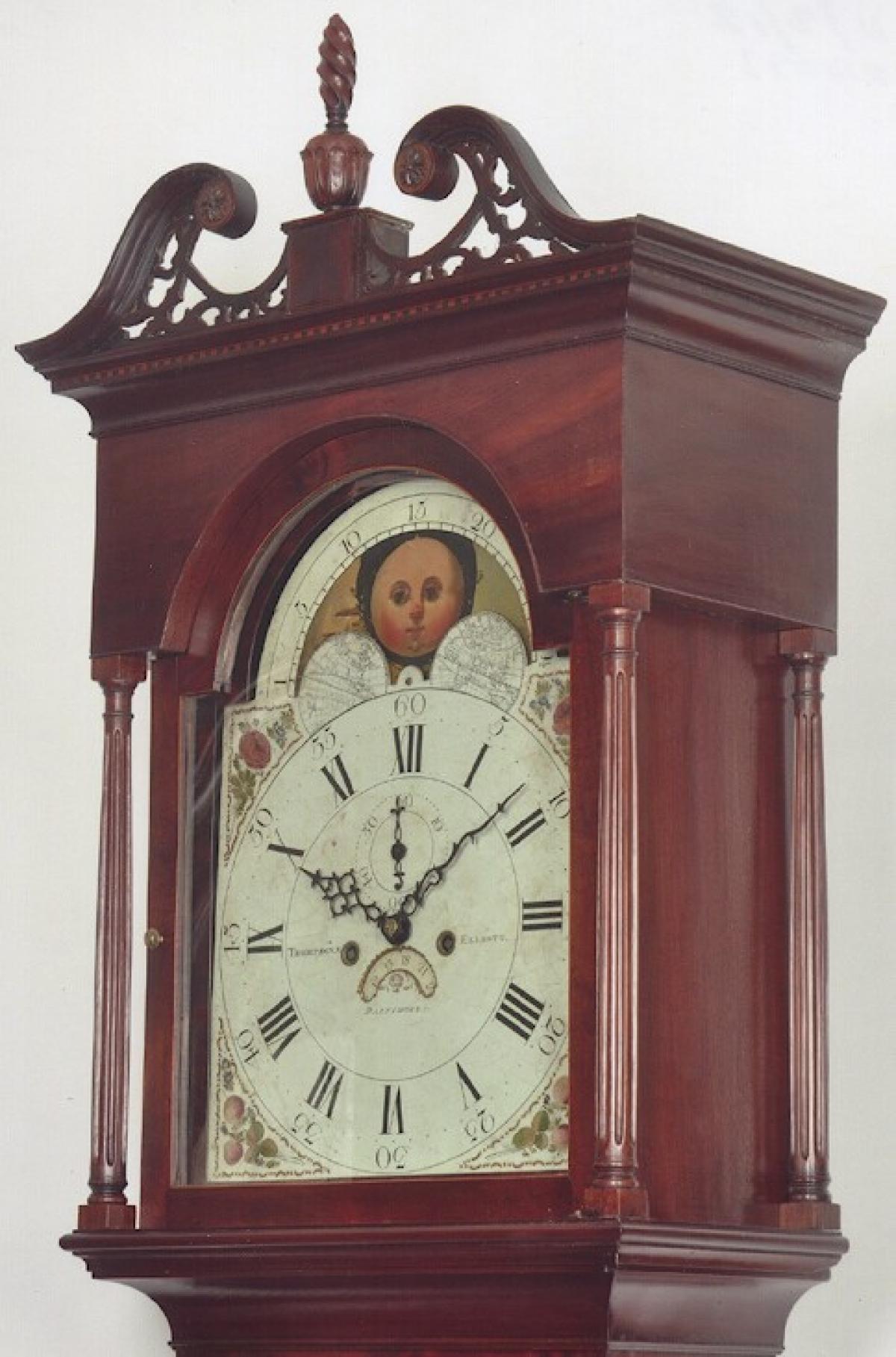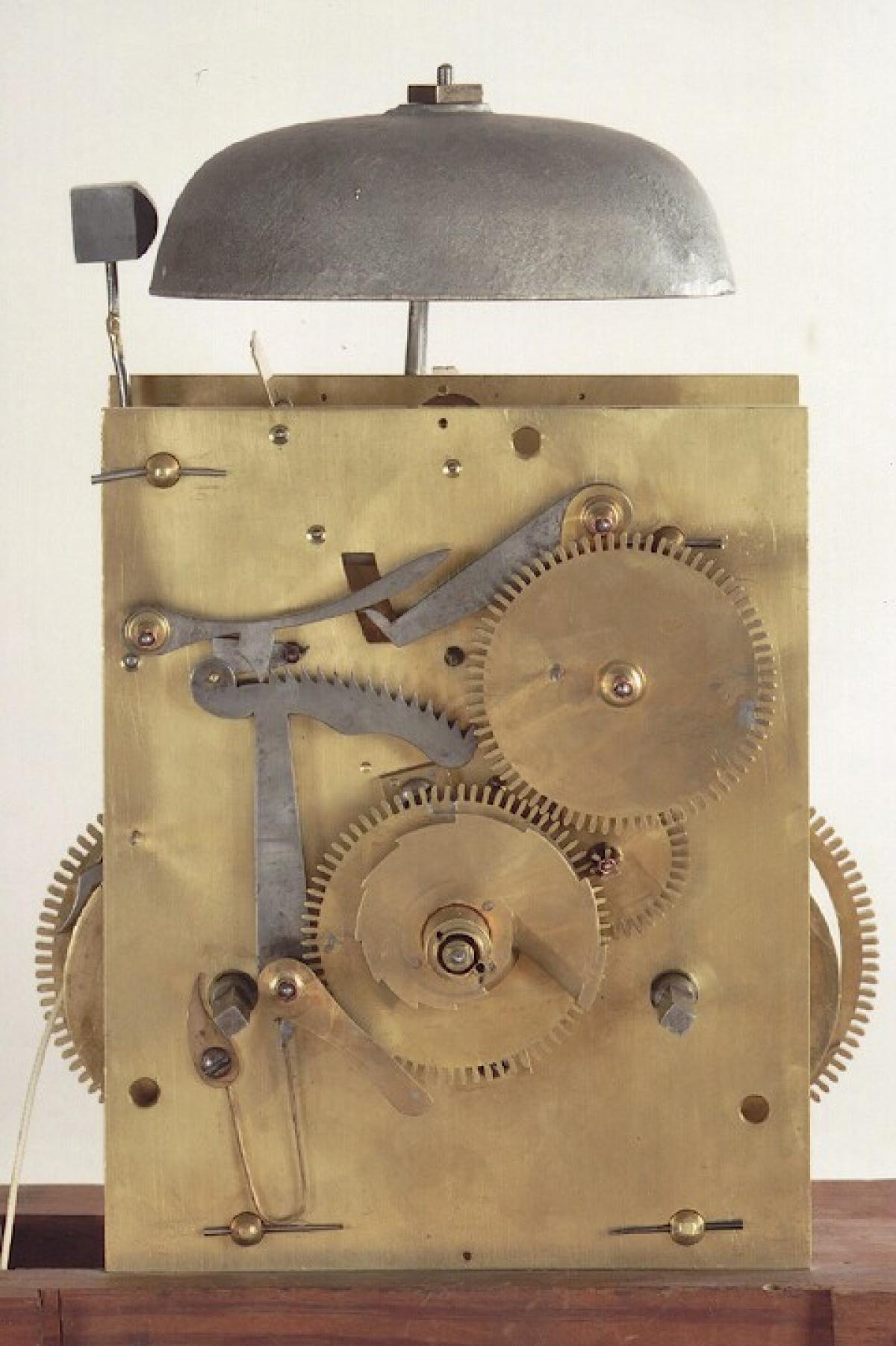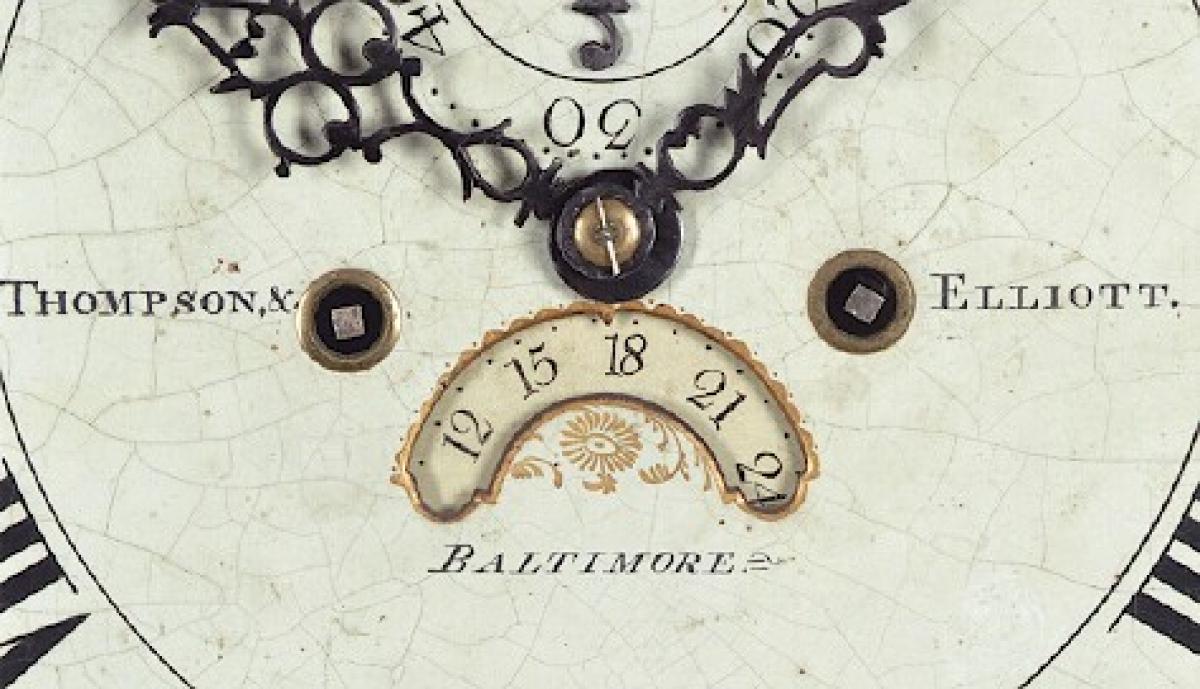Thompson & Elliot of Baltimore, Maryland. A tall case clock.
This impressive 19th century Federal mahogany tall case clock stands a full 103.5 inches or 8 feet 7.7.5 inches tall. The extensive use of carefully chosen figured mahogany throughout the case design suggests that it was most likely made for a townhouse or a metropolitan customer.
This case stands on four boldly formed applied ogee bracket feet. The base panel format is complex. Fluted quarter columns are fitted into the corners. These terminate in turned wooden quarter capitals. The central panel features a book matched veneer. The mahogany grain pattern is vibrant. This panel is framed with a cross banded mahogany border that is trimmed with an interior light wood string or line inlay. The waist section is long and features a nicely shaped door. This door is veneered with a figured selection of mahogany. This is also trimmed with a light wood string border and a crassbanded framing. The outer edge of the door features a cock beaded molding. The sides of the waist share the fluted quarter column detail found in the base section. The bonnet features a cornice molding that is inlaid with a dental design. This mold supports an applied swans neck molding. This is fitted with a pierced fret and the horns terminate in carved wooden rosettes. A central veneered inlay plinth supports a carved urn and flame finial. Fully turned and fluted bonnet columns ending in simple wooden capitals flank the arched glazed door which opens to a colorfully painted iron moon phase dial.
This colorfully painted dial displays hours, minutes, seconds, phases of the moon and the month calendar. The upper two spandrel areas are decorated with floral designs. The lower spandrels feature strawberries. This painted dial is signed by the clockmaker in block lettering. It reads, “THOMPSON & ELLIOTT \/ BALTIMORE. “
The weight driven movement is constructed in brass. It is designed to run for an eight day duration and to strike the hour on the hour on a cast iron bell. It is good quality.
This clock was made circa 1797.
William Thompson and William Elliot formed a partnership in Baltimore, Maryland. It was located at 55 Gay Street in 1797 and lasted one year until January 25, 1798.
Thompson seems to have been the clockmaker of the two. He may have been British trained and is listed as a watch and clockmaker in Baltimore during the period of 1795 through 1800. It is recorded that he had five apprentices learning the wacthmaking trade and one learning clockmaking. He died in 1800.
Elliot, is also listed in Baltimore in 1799 through 1801. Very little in known of him.


